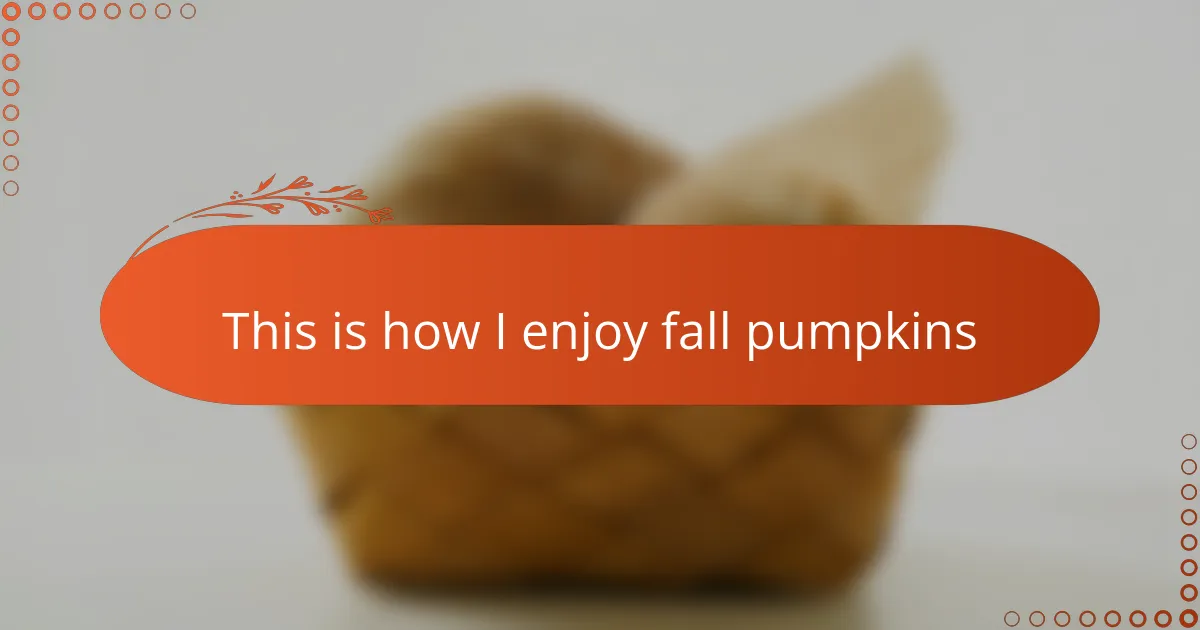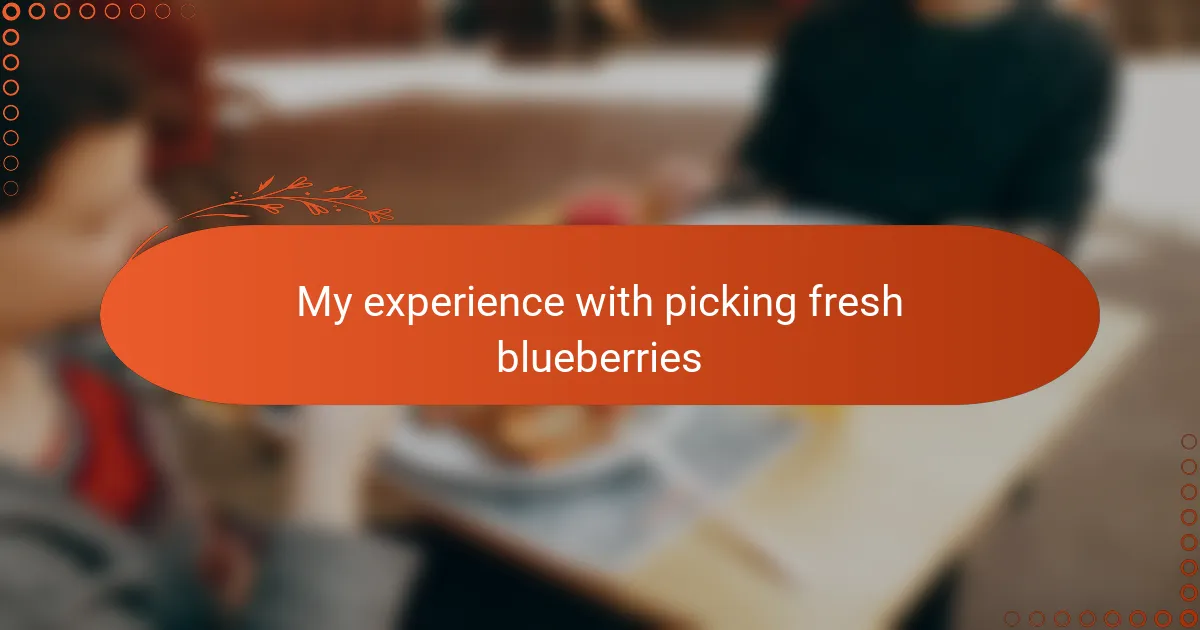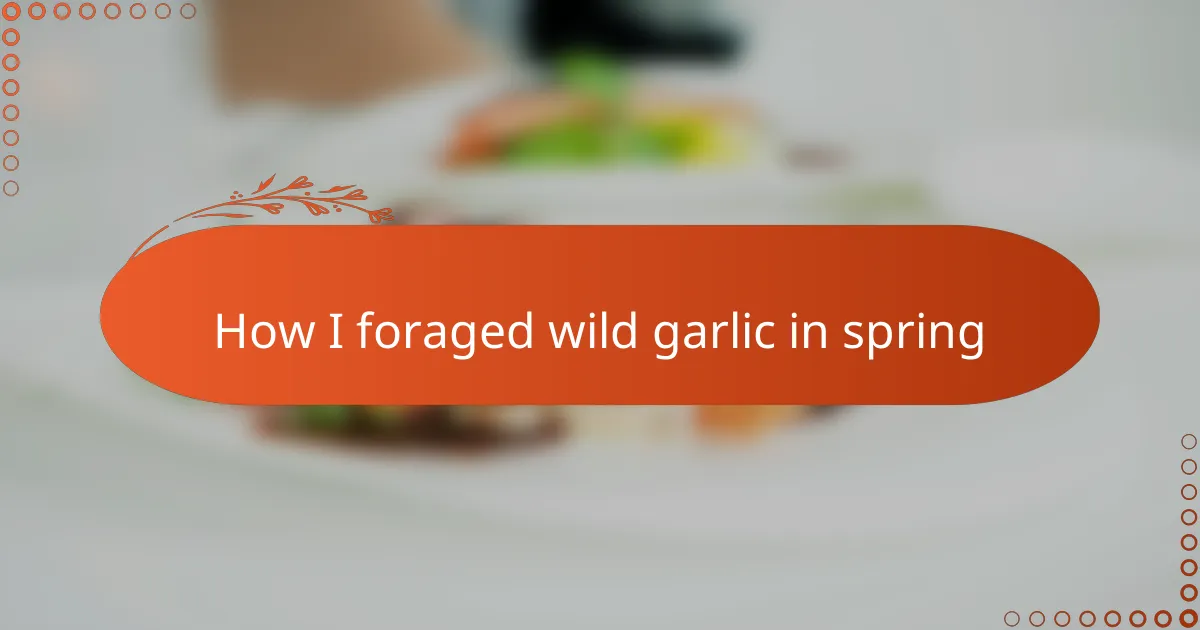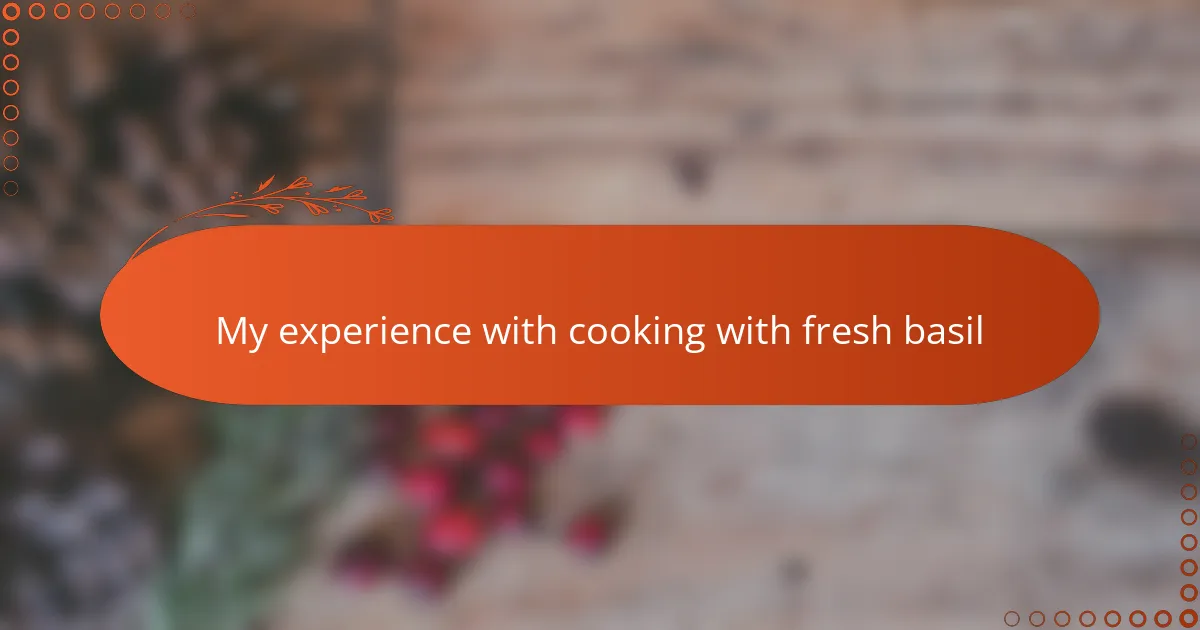Key takeaways
- Understanding different pumpkin varieties enhances culinary experiences, allowing for flavorful, diverse dishes from soups to baked goods.
- Choosing the right pumpkin involves inspecting firmness, unblemished skin, and color to ensure optimal taste for cooking.
- Roasting pumpkins intensifies their natural sweetness and improves texture, making them more suitable for various recipes.
- Cooking with pumpkins fosters a cozy autumn atmosphere, connecting the cook to seasonal traditions and simple pleasures.
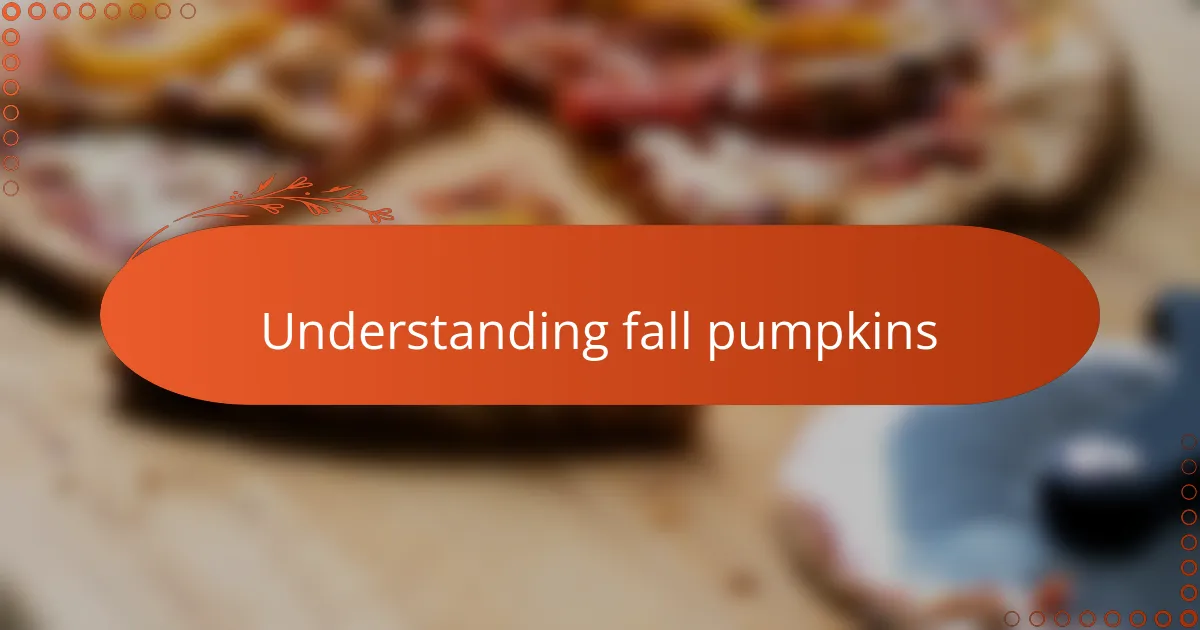
Understanding fall pumpkins
When I think about fall pumpkins, I see more than just the familiar round, orange gourds used for jack-o’-lanterns. There are so many varieties, each with its own unique flavor and texture—some are sweet and perfect for pies, while others have a nuttier taste that shines in soups or roasted dishes. Isn’t it fascinating how these differences can completely change the way we enjoy pumpkin in the kitchen?
I remember the first time I cooked with a sugar pumpkin instead of the bigger carving kind. The taste was richer, creamier, and far less watery, which made all my fall recipes come alive. It really opened my eyes to how understanding pumpkin types can elevate simple homestead cooking into something truly special.
Have you ever stopped to think about why pumpkins are such a fall staple? Beyond their cozy flavor, they carry a sense of tradition and comfort that feels like a warm hug on chilly days. This emotional connection is, for me, part of what makes working with fall pumpkins so enjoyable—it’s food that nourishes both body and soul.
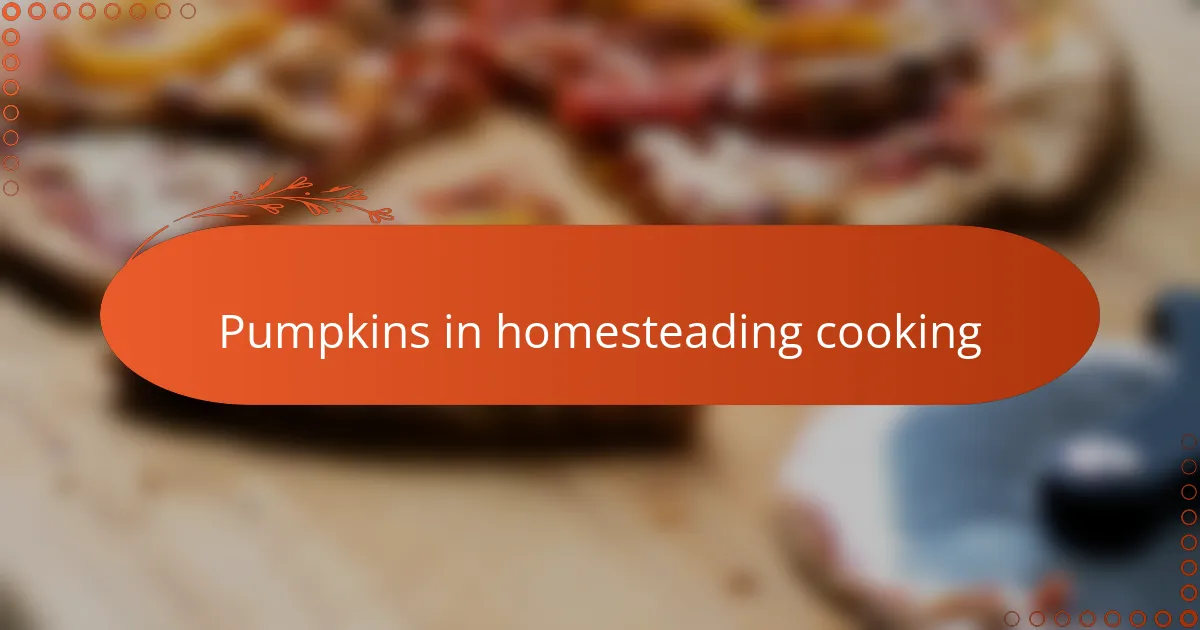
Pumpkins in homesteading cooking
Pumpkins have been a cornerstone in my homesteading kitchen for years, not just for their flavor but for their incredible versatility. Whether I’m simmering pumpkin into a hearty stew or baking it into a rustic bread, the way pumpkins absorb and complement other ingredients never ceases to amaze me. Have you noticed how pumpkin’s natural creaminess can replace heavier dairy components, making recipes lighter yet still comforting?
One of my favorite discoveries has been using roasted pumpkin cubes as a base for savory dishes, blending their earthy sweetness with herbs grown right on the homestead. This approach feels both resourceful and rewarding—turning what might be a simple squash into a centerpiece bursting with flavor. It’s moments like these that remind me why pumpkins hold such a cherished place on the homestead table.
Do you ever find that working with pumpkins brings a certain rhythm to your cooking routine? For me, peeling and preparing pumpkins is almost meditative, a way to slow down and connect with the season. As the kitchen fills with their warm scent, I can’t help but feel a deep sense of gratitude for the harvest and the simple joys of fall cooking.
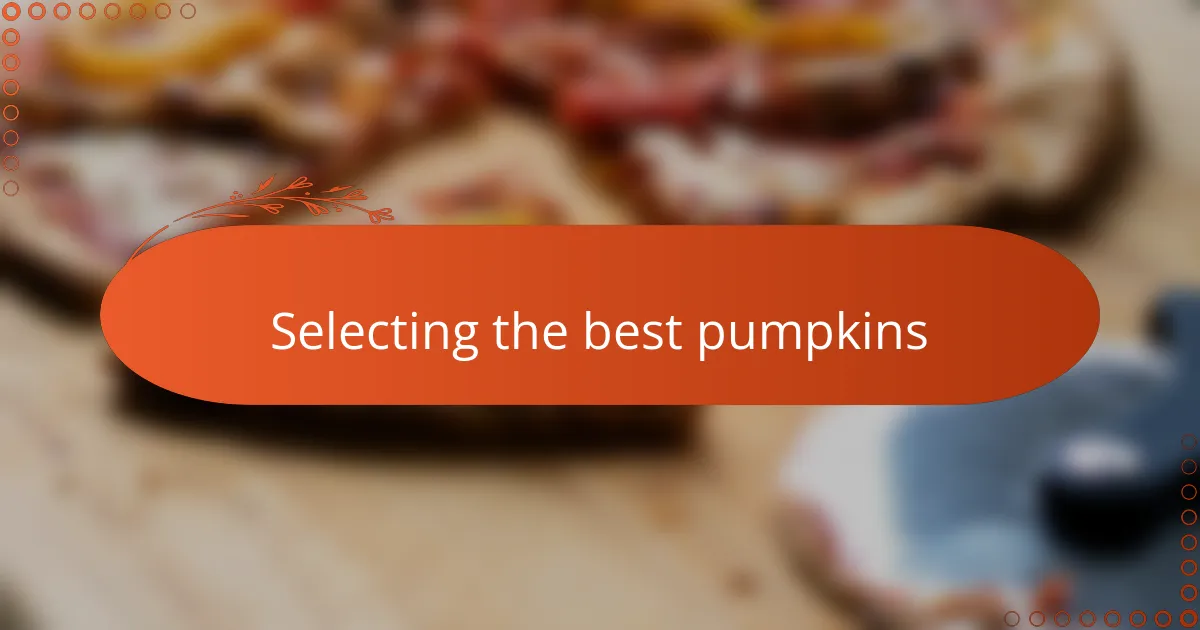
Selecting the best pumpkins
Choosing the best pumpkin always starts with a little inspection in my experience. I look for a firm, unblemished skin and a stem that’s still sturdy—these signs tell me the pumpkin was harvested at its peak and will deliver the best flavor. Have you ever felt how a heavier pumpkin for its size often means it’s denser and less watery? That’s exactly what I aim for.
Sometimes, I find that the pumpkin’s color hints at its roasting or baking potential. A deep, rich orange often means a sweeter, more flavorful flesh, which I know will bring out those cozy fall notes in pies or soups. The first time I chose a paler pumpkin by mistake, my dish turned out bland, teaching me that color isn’t just about looks—it’s about taste too.
Picking out pumpkins can feel like a small ritual, connecting me to the season before I even start cooking. Holding that perfect pumpkin in my hands, I’m reminded of the hard work behind the harvest and how grateful I am to bring those flavors into my kitchen. Have you noticed how this simple step can set the whole tone for your fall cooking?
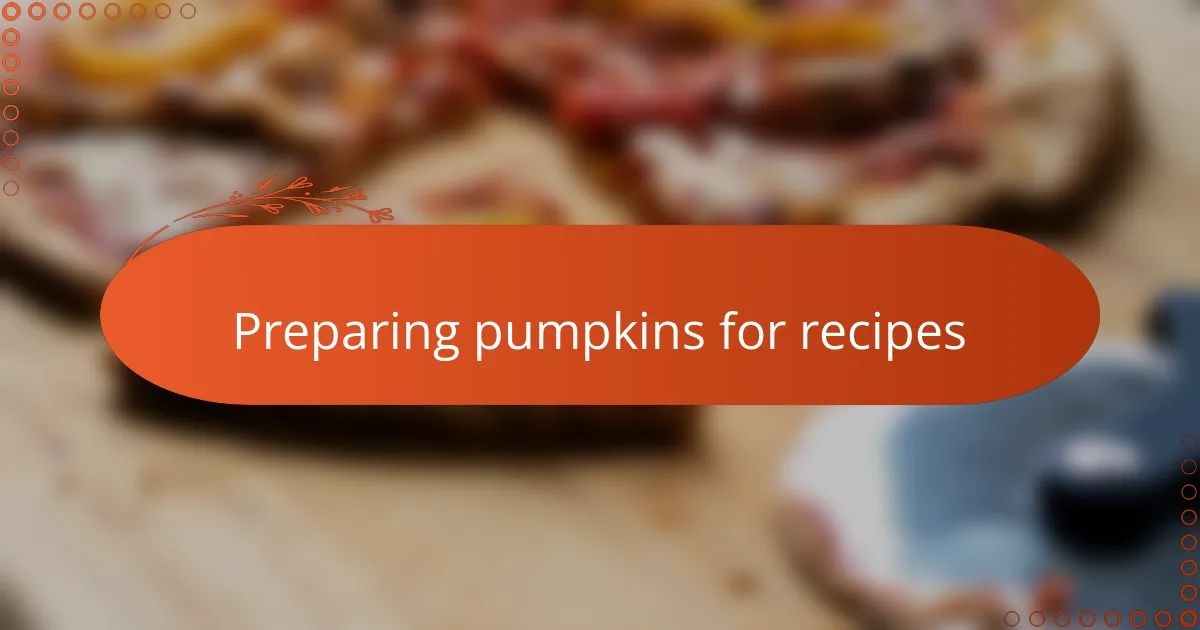
Preparing pumpkins for recipes
Preparing pumpkins for recipes always starts with selecting the right tools in my kitchen. A sharp, sturdy knife and a large spoon make peeling and scooping out seeds less daunting, turning what could be a chore into a satisfying first step. Have you ever felt the sense of accomplishment that comes from transforming a tough pumpkin into soft, ready-to-use flesh?
Once I’ve peeled and cleaned the pumpkin, I usually cut it into even chunks to ensure they cook uniformly. This little detail matters more than it seems because it guarantees that each bite will have the perfect texture, whether I’m roasting, pureeing, or stewing. I remember a time when uneven pieces led to some undercooked bits, teaching me to respect this simple but crucial step.
Dealing with pumpkin seeds is another part of the process I’ve grown to appreciate. Instead of tossing them away, I rinse, dry, and roast them with a sprinkle of salt—they turn into a crunchy snack that complements the soft pumpkin dishes I make. Isn’t it amazing how every component of the pumpkin can find new life in the kitchen?
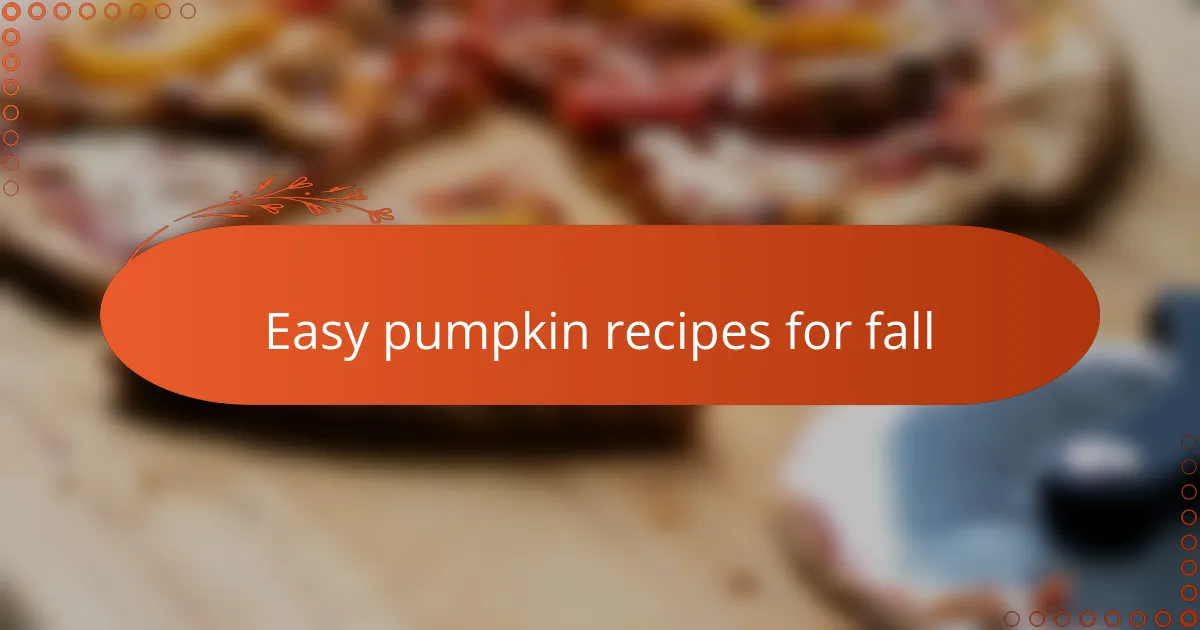
Easy pumpkin recipes for fall
There’s something incredibly satisfying about whipping up easy pumpkin recipes when fall arrives. One of my go-to favorites is a simple roasted pumpkin with a drizzle of olive oil, sea salt, and fresh rosemary from the garden. It’s quick, requires minimal ingredients, and fills the kitchen with that unmistakable warm, spicy aroma that just screams autumn.
Have you ever tried pumpkin soup as an effortless comfort dish? I often blend cooked pumpkin with onions, garlic, and a splash of cream or coconut milk for richness. It’s the kind of meal that warms you from the inside out and feels like a hug in a bowl—perfect for chilly evenings on the homestead.
I also love how versatile pumpkin can be in baked goods. Tossing pumpkin puree into muffin or pancake batter instantly boosts flavor and moisture without any fuss. It’s those small touches in easy recipes that keep me coming back to pumpkins every fall, making seasonal cooking both joyful and accessible.
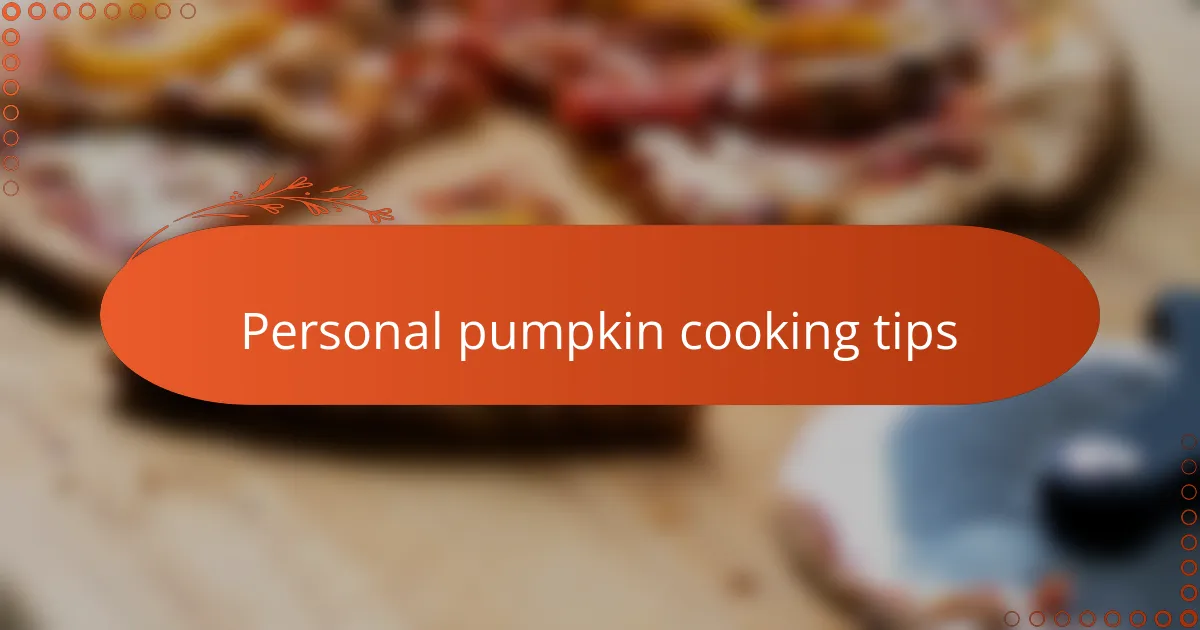
Personal pumpkin cooking tips
When I cook with pumpkin, one tip I swear by is to always roast it first before adding it to recipes. Roasting intensifies that natural sweetness and brings out a deeper, almost caramelized flavor that purees and raw pumpkin can’t match. Have you noticed how roasting also helps reduce the pumpkin’s watery texture? It makes all the difference in the final dish’s consistency.
Another personal habit I’ve developed is seasoning the pumpkin early in the cooking process. Whether it’s a pinch of cinnamon in a pie or a sprinkle of smoked paprika in a savory stew, adding spices right after roasting unlocks layers of flavor I might otherwise miss. I find this approach turns simple pumpkin into something that feels rich and thoughtful, like a real celebration of fall’s best taste.
One practical piece of advice I’ve learned over the years is not to rush peeling the pumpkin. It’s tempting to hurry through, but I’ve found taking my time prevents waste and keeps those vibrant orange cubes intact. Plus, there’s something oddly calming about slow, mindful peeling—it’s like a little quiet moment in an otherwise busy kitchen. Have you ever experienced that calm when working with fresh produce? For me, that small ritual adds to the joy of cooking with pumpkins.
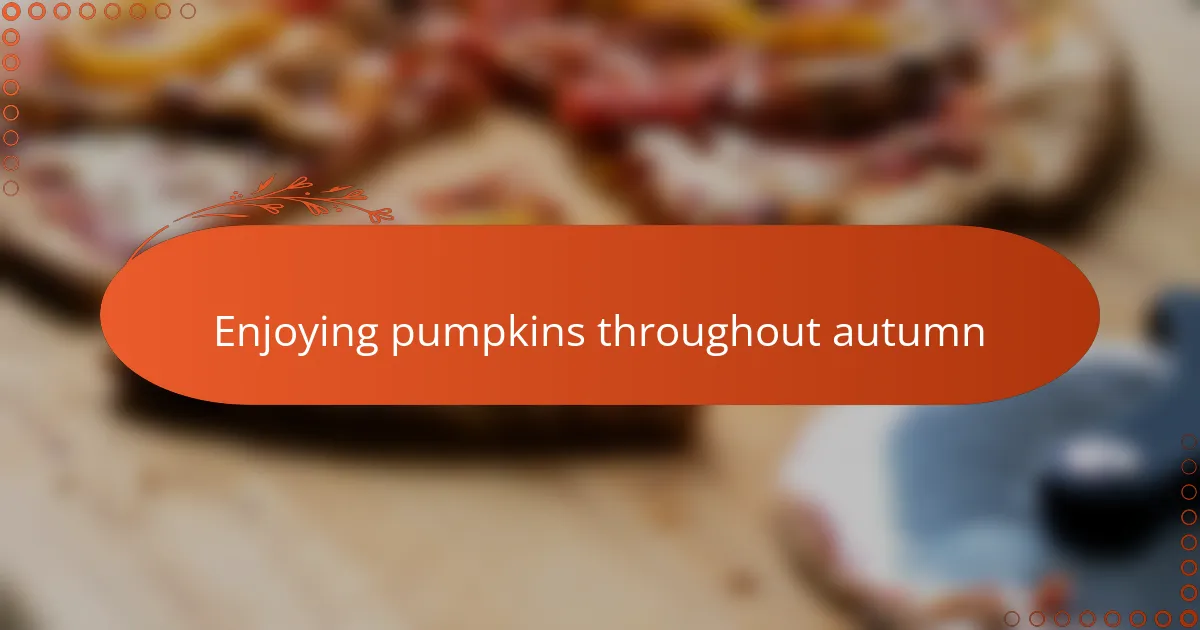
Enjoying pumpkins throughout autumn
Pumpkins truly become the heart of my autumn kitchen from the moment the season turns crisp. I love slicing into their vibrant flesh, knowing that each batch of pumpkin brings a new opportunity to experiment—whether it’s purée for pie or cubes tossed with herbs and roasted to perfection. Have you noticed how simply having a pumpkin on the counter seems to invite coziness into a home?
Throughout the fall, I find myself drawn to pumpkin in so many ways beyond just cooking. The scent of simmering pumpkin soup or the sight of a slowly baking pumpkin bread brings a comforting rhythm to my days. It’s like each pumpkin dish I prepare marks a little celebration of the season, grounding me in the harvest and the simpler pleasures autumn offers.
One thing I’ve come to cherish is how pumpkin’s gradual transformation in the kitchen mirrors the season itself. Starting with firm, raw gourds and ending with tender, sweet dishes feels almost like a story unfolding in flavors. Do you ever feel that connection too—how working with pumpkins helps you slow down and savor the passing of fall? It’s a reminder that some of the best moments are those made one recipe at a time.
